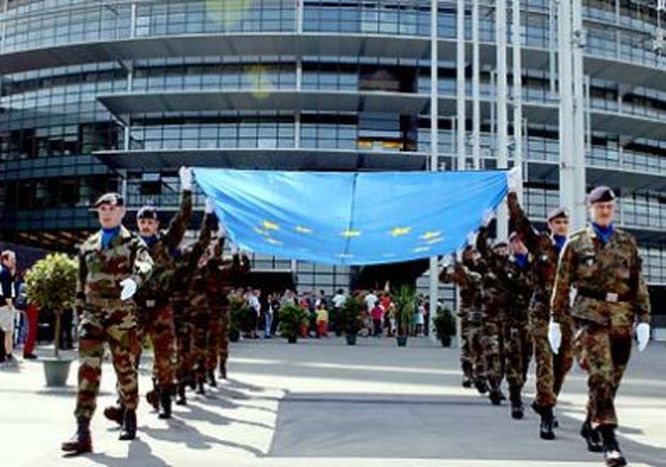
Transition to a Common Security and Defense Policy (CSDP) for Europe: Need or Euphemism?
Published on
Ilias Lappas
The European Security and Defense Policy (ESDP) has its roots in the Franco-British summit of St. Malo (1998), when the idea of a European defense policy that would enable the European Union (EU) to act autonomously in military matters was successfully launched.
This idea was accepted by all European partners and then formalized at the European Council of Cologne in June 1999, thus marking the birth of the ESDP.

During the years which followed, the Member States of EU achieved several objectives such as:
1. Defining basic structures for the ESDP:
-
The Political and Security Committee (PSC)
-
The European Union Military Committee (EUMC)
-
The European Union Military Staff (EUMS)
-
The Civilian Planning and Conduct Capability (CPCC)
-
Launching more than 20 civilian and military operations.
-
Creating the European Defense Agency (EDA) which deals with all aspects of defense at the European level: capabilities, research and technology (R&T), armaments, market and the European Defense Technological and Industrial Base (EDTIB).
-
Agreeing on the European Security Strategy (ESS) in December 2003, a holistic approach for international crisis management.
But this is not the end of ESDP's development, aside from all the shortfalls which have been obvious in this first decade. Indeed, despite the apparently high number of operations launched to date, it seems that it is increasingly difficult to maintain steady progress on ESDP matters. In general, progress on acquiring capabilities is chocked and this is not only due to financial crisis. Restrictions on the pooling of capabilities are essentially the result of the Member States´ desire to retain sovereignty in this area, entrenched defense portfolios and vested interests. It is also difficult to build common equipment and to have an efficient European defense industry.
 The goal should be to go further and deeper in order to have the most integrated European defense policy possible, the common defense policy which was envisaged in the Maastricht Treaty and remains the objective of the Lisbon Treaty, which commits EU leaders to a “Common Security and Defense Policy” (CSDP), a symbolic change and objective which, of course, must be filled up with specific elements.
The goal should be to go further and deeper in order to have the most integrated European defense policy possible, the common defense policy which was envisaged in the Maastricht Treaty and remains the objective of the Lisbon Treaty, which commits EU leaders to a “Common Security and Defense Policy” (CSDP), a symbolic change and objective which, of course, must be filled up with specific elements.
To my mind, it is still possible for all Member States to make headway as EU. Hence, they should seek to make progress as a group in the following critical areas:
-
The development of a specific European Defense White Paper that reflects the defense implications of the ESS in terms of crisis-management, missions, etc.
-
The harmonization of civil-military doctrines and training of personnel to increase interoperability between national forces and thus the ability of civil-military personnel to work together.
-
The development of an integrated civil-military European Operational Headquarters for achieving common command and control and strategic planning structures for conducting ESDP missions.
-
The development of more efficient and more interoperable capabilities towards pooling and specialization.
-
The setting up of a common defense market and a strong European Technology and Industrial Base (EDTIB).
It can be said that progress at EU level remains in an uphill direction but a task that is worth fighting for, to fulfill the common need of European citizens for an enhanced role of a more effective and capable EU in the field of crisis management.
Sources: consilium.europa.eu/, www.eda.europa.eu/



